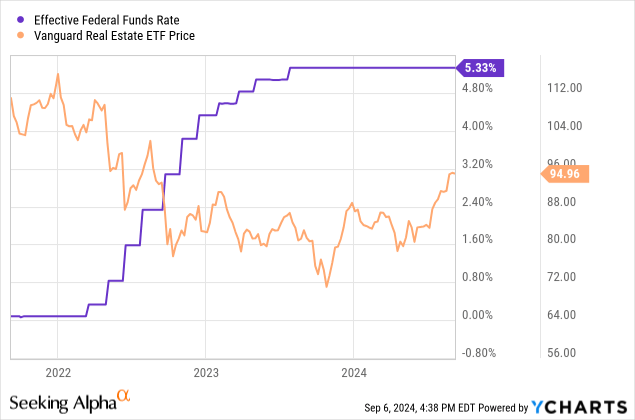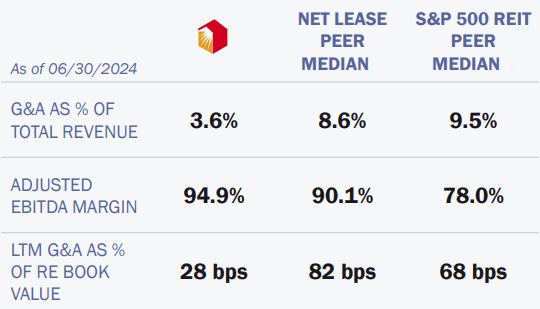PM Images
Co-authored by Treading Softly
“No man is an island,
Entire of itself;
Every man is a piece of the continent,
A part of the main.”
John Donne penned these words in his poem “No Man Is an Island”.
The biggest mistake investors frequently make is expecting their holding to operate like an isolated island, while it can have unique individual factors that impact its share price or even its dividend. Every single company operates within a sector of the market that also has overarching impacts. You can have a wonderful BDC (Business Development Company) that operates more successfully when interest rates fall, but it will still be impacted by the general market understanding that BDCs benefit from higher rates, meaning that it may sell off simply because the entire sector is selling off and moving in sympathy with it regardless of its fundamentals. Typically, however, over time, it will outperform its peers in those environments because its fundamentals continue to be stronger. One example of this can be the real estate sector. Real estate investment trusts, or REITs, benefit when interest rates are low because they are funded primarily by debt. However, many of them continue to perform very strongly even in a high-rate environment. REITs are traded more as “bond alternatives” than on their own fundamentals.

We can see that the entire REIT sector got hit hard when interest rates climbed but has been recovering even while interest rates have remained high because the sector’s fundamentals remain strong.
Today, I want to look at one blue chip REIT and how it can benefit going forward from lower rates, but also can richly reward you now.
Let’s dive in!
Ode To Income
Realty Income (NYSE:O), yielding 5.2%, is a REIT that has achieved “Dividend Aristocrat” status. It calls itself “The Monthly Dividend Company”, and has been in the business of providing shareholders with monthly dividends long before it became publicly traded in the stock market.
O generates earnings to pay dividends by being a landlord. It buys real estate, and leases it to companies using a “triple-net lease”. For landlords, a triple-net lease is appealing because it makes most of the day-to-day expenses and maintenance the responsibility of the tenant. A lightbulb goes out? It’s the tenant’s responsibility. A window breaks? The tenant needs to fix it. Property taxes go up? That’s on the tenant too. As a result, the landlord does not have to have maintenance staff and has much more predictable expenses. Something like replacing the roof is the landlord’s responsibility, but that is a predictable and planned expense.
Of course, any benefit to the landlord comes with something equally favorable to the tenant. In the case of triple-net leases, tenants like them because they provide the tenant a lot more flexibility to remodel the interior to their liking, and the rent on a triple-net lease is going to be lower than other leasing structures. These leases have become very popular among large corporations that build the buildings, and then turn around and do a “sale leaseback”. They simultaneously sell the property to the REIT and then lease it. For the tenant, they free up capital to invest in their business rather than tying it up in real estate, and the landlord gets ownership of the building and a nice long lease to a tenant that the building was built for.
O has been using this strategy to grow a large portfolio of over 15,000 properties in the United States and Europe. Source
Realty Income Q2 2024 Presentation O uses its strong balance sheet and scale to grow AFFO (adjusted funds from operations) per share by an average of 5.1%/year Realty Income Q2 2024 Presentation O has competitive advantages that smaller REITs can’t compete with. An A- credit rating doesn’t just materialize overnight, and with its scale, O’s cost efficiency blows peers out of the water: Realty Income Q2 2024 Presentation Given the exact same property, O makes more profit than its peers because it is paying less for its debt and its G&A costs are lower. This allows O the option of buying the same property and earning more money, or buying higher quality properties and earning the same amount of money.


This scale is not something that can be conjured into existence. O has been building its portfolio for nearly 70 years, and it has a commanding lead over peers. This has been amplified as O has acquired two peers – Spirit Realty Capital and VEREIT. Both were reasonably sized REITs in their own right, but O was able to immediately enjoy upside thanks to its superior balance sheet and scale.
With a dividend yield of 5%, O is near the bottom end of our target range for the High Dividend Opportunities’ Model Portfolio. However, we can have a very high level of confidence that O is going to continue growing its dividend through any economic environment. This makes it particularly appealing if we are headed for a recession. So with recession risk looming and the very high likelihood that O’s price is going to continue its recent climb. This might be the last opportunity to buy O with a 5%+ yield. Before O leaves the station: All aboard, next stop, Dividendtown!
Conclusion
When you have an income-producing highly reliable company like O in your arsenal, managing your portfolio becomes simpler. It is wonderful to have various anchor-style stocks – stocks or opportunities you’ve purchased where the company is just drop-dead reliable. You don’t need to babysit it. You don’t need to constantly watch over it. You can just enjoy the income that it generates, and that’s it. It doesn’t mean that you should completely turn a blind eye to it, but it also means that it’s not a stock you have to constantly babysit or worry about.
When it comes to retirement, I encourage investors to have an income portfolio that targets a 9-10% yield, as I do within my investment group –High Dividend Opportunities. This strategy allows you to have a massive amount of income pouring in and reinvest 25% of it – using our Rule of 25 – and live off the other 75%. This keeps your income growing and your portfolio growing but provides you with an abundance of income greater than the average retirement guidelines of living off of 4% of your portfolio’s value. At the end of the day, you need money to live. It’s just that simple. Life is not free. So smother it with income.
That’s the beauty of my Income Method. That’s the beauty of income investing.



